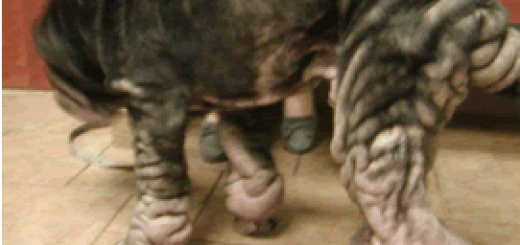Breeding Advice
- Be prepared to breed your dog. Do your research on pedigrees, breed health problems, etc. well before you breed your dog. Make sure your dog has had hip X-rays to rule out hip dysplasia either by the OFA or Penn Hip procedures. The OFA mandates this be done after two years of age. It is best in the female not to radiograph the hips during a heat cycle. Be sure your female is up to date on vaccinations and has had a pre-breeding examination by your veterinarian including a fecal exam. I would recommend any Shar-Pei female who is used in a breeding program to have a complete blood count and a blood chemistry screen including a brucellosis test (bacterial sexually transmitted disease) and urinalysis. I’ve seen too many cases of bitches in early kidney failure decompensate due to the stress of pregnancy/whelping and then dying shortly after having pups.
- Do not breed the dog if your dog or the dog you are breeding your dog with have or have had:
- FSF (Familial Shar-Pei Fever)
- A littermate with FSF and/or amyloidosis or a littermate that died of amyloidosis or undetermined kidney failure/disease.
- FSF and/or amyloidosis or unexplained kidney failure/disease in their line.
- Unexplained death at a young age in their line.
- Cancer in their line.
- Bloat in their line.
- I would breed to a line with longevity (greater than 10 years of age). I like to see a history of many old dogs in the pedigree.
- Read up on breeding, nutrition and whelping, consult with experienced breeders and go online to learn as much as possible. Then address specific questions with your veterinarian.
- Be sure your veterinarian is comfortable with reproductive issues and is experienced in doing cesarean sections in cases of whelping problems. See if there is a reproductive specialist in your area especially if you elect to determine ovulation timing using progesterone assays. Be sure your vet knows how to eye tack Shar-Pei puppies or can refer you to someone who can. Follow your veterinarian’s advice concerning prenatal care and whelping.
- Be sure you know what to do in a whelping emergency and know where the emergency clinic is or whether your vet is on call for emergencies. Have emergency numbers readily available.
- Determine whether your dog has characteristic and qualities which will contribute to the overall betterment of the breed. I look at this in terms of positives and negatives. I list these on a sheet of paper and use it to objectively evaluate my dog. Positives may include good temperament, working ability, good hips, good eyes, and good health in general. Negatives would include bad hips, questionable temperament, entropion, bad ears, allergies, etc.
- I would also advise you consider starting a list of prospective puppy buyers so can determine if you can sell/place the pups you get.
- Seriously consider if you have the time to whelp pups, feed them, begin their early training, have the funds for vaccinations and any health issues that arise, can stay up nights if needed and can arrange your schedule for veterinary appointments.
- Be prepared to take a pup back if the buyer decides they don’t want the pup due to health issues, temperament issues, costs involved in caring for a puppy, scheduling problems, etc. Often puppy buyers do not research the breed, do not know what’s involved in raising and caring for a puppy, aren’t familiar with the costs of veterinary care, feeding, training and equipment and will return the puppy to the breeder. Shar-Pei rescue groups are full with these dogs and overburdened as it is. It is the breeder’s responsibility to take the pup back.
I think most breeders would agree that having a litter of pups is not a money making enterprise. It requires dedication, work and preparation to have a successful outcome.
